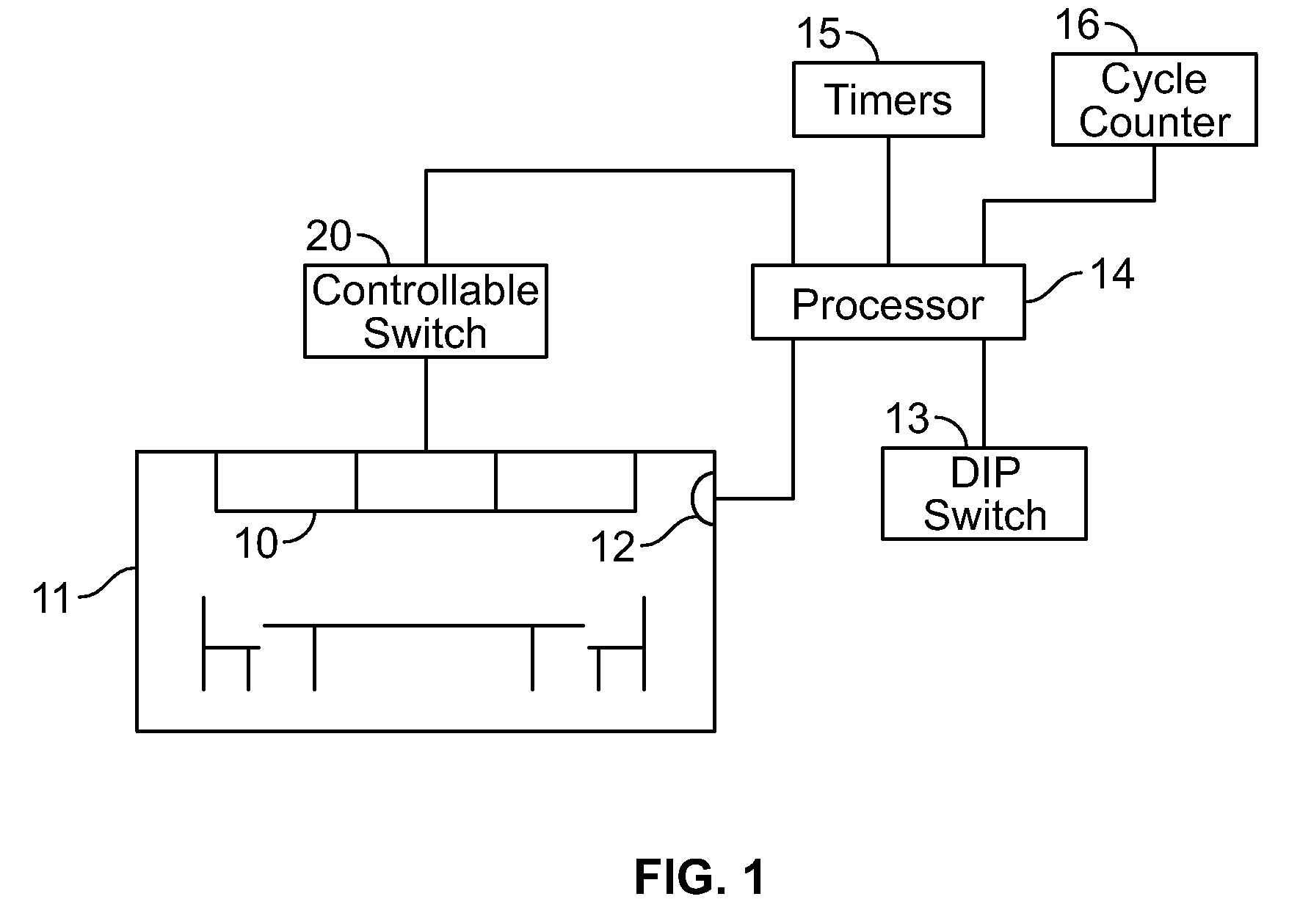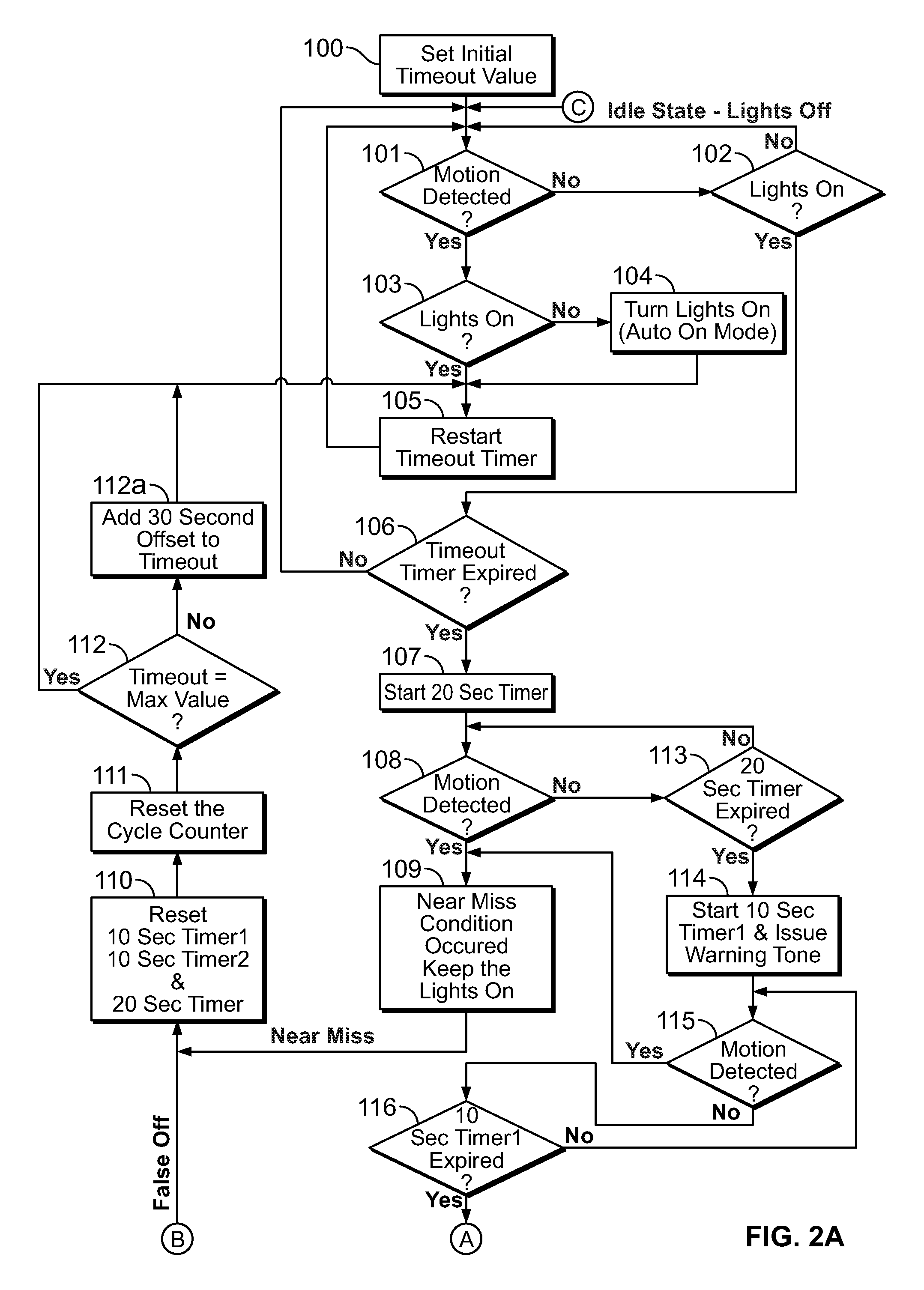Automatic timing adjustment system for occupancy sensors
a technology of occupancy sensor and automatic adjustment, which is applied in the direction of electric variable regulation, process and machine control, instruments, etc., can solve the problems of wasting energy, unable to determine the ideal duration of the timer, and occupants' light being turned o
- Summary
- Abstract
- Description
- Claims
- Application Information
AI Technical Summary
Benefits of technology
Problems solved by technology
Method used
Image
Examples
Embodiment Construction
[0015]Although the invention will be described in connection with certain preferred embodiments, it will be understood that the invention is not limited to those particular embodiments. On the contrary, the invention is intended to cover all alternatives, modifications, and equivalent arrangements as may be included within the spirit and scope of the invention as defined by the appended claims.
[0016]Turning now to the drawings, FIG. 1 is a diagram of a lighting control system for controlling the status of lamps 10 that artificially illuminate a space 11, such as a conference room, that contains an occupancy sensor 12. The control system includes a DIP switch 13 to permit the manual setting of a time-out period, and a processor (microcontroller) 14 connected to both the occupancy sensor 12 and the DIP switch 13. The processor 14 uses input signals, along with information that it stores regarding the operating history of the control system, to produce output signals that control the s...
PUM
 Login to View More
Login to View More Abstract
Description
Claims
Application Information
 Login to View More
Login to View More - R&D
- Intellectual Property
- Life Sciences
- Materials
- Tech Scout
- Unparalleled Data Quality
- Higher Quality Content
- 60% Fewer Hallucinations
Browse by: Latest US Patents, China's latest patents, Technical Efficacy Thesaurus, Application Domain, Technology Topic, Popular Technical Reports.
© 2025 PatSnap. All rights reserved.Legal|Privacy policy|Modern Slavery Act Transparency Statement|Sitemap|About US| Contact US: help@patsnap.com



